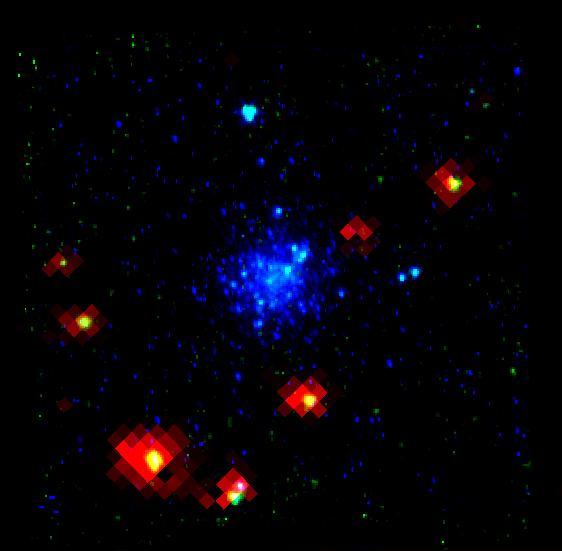AKARI Results
AKARI Highlights II: The mystery of missing dust
- AKARI search for the cold dust in the globular clusters -
High sensitivity far-infrared observations with AKARI confirm that interstellar space in the globular clusters is void, despite the expectation that globular clusters contains dusts ejected from old stars within the system. Where are the dusts gone? The results left us a big mystery on the evolution of globular clusters and the interstellar dust.
Globular clusters are group of hundred thousands to a million stars gathered in a spherical shape, and are surrounding our Milky Way Galaxy. It is generally accepted that the globular clusters were born about 10 billion years ago by one-time star formation in each system. Massive, short-lived stars had already ended their life, and stars as heavy as our Sun are on the way to becoming red giant stars.
These aged stars often eject large amount of gas and dust into the interstellar space. The stars in the globular clusters are not exception, as they are observed by AKARI and other telescopes. The ejected matters stay in the interstellar space for many years and eventually are used to form the new generation of stars and planets. Infrared observations can investigate where and how the interstellar matters, especially dusts distributes in the space.
However, we have no clue where the ejected matter goes in the globular clusters. It is expected that the matters fall into the centre of the cluster by the gravitational force and reserved there. But no such result obtained in the previous observations. We have carried out high-sensitivity observations to search for the cold interstellar dust in the globular clusters with the Far-Infrared Surveyor (FIS) onboard AKARI. We observed twelve globular clusters, and found the evidence of cold dust from NONE of them!
Figure 1 shows the result of one of our targets, NGC 1261 in the constellation Horologium. The cluster is located about 53,000 light year from us. AKARI observed the target at 90 micrometers with the FIS as well as 4 and 15 micrometers using the Near- and Mid-Infrared Camera (IRC). The image shown is the three colour composite from these three wavelengths data associated to Red, Blue and Green, respectively. Objects bright in far-infrared (90 micrometers) are seen as red. We have several such sources in the observed field, however, detailed investigation told that they are distant galaxies. These galaxies keep plenty of interstellar dust that emits brightly in the far-infrared wavelengths. On the other hand the globular cluster located at the centre of the image is seen in blue, indicating no evidence of cold dust in the system.

Figure 1: Three colour composite image of the Globular Cluster NGC 1261 from images at 4 (Blue), 15 (Green), and 90 (Red) micrometers obtained by AKARI. A cloud of stars seen in blue at the centre of the image is the globular cluster. Seven red sources around the clusters are all identified with galaxies behind the cluster. These galaxies posses plenty of interstellar dust that emits brightly in the far-infrared. In contrast only stars are seen in the globular cluster itself. No presence of dust is confirmed by AKARI.
Evolved stars in the globular cluster should supply gas and dust. Taking into account the number of stars in the clusters, the no detection of cold dust in the clusters indicates that the ejected dust must disappear in several million years. Then where has the dust gone? One possibility considered is to accrete onto the stellar surface. But the expected timescale of this process is much longer than millions of years. The current results from the AKARI observation set a new question to the astronomers. We hope that we will be able to answer the question in future.
This research has been performed by Dr. Noriyuki Matsunaga (JSPS fellow/Kyoto University) in collaboration with researchers in the University of Tokyo, National Astronomical Observatory Japan, University of Denver, and Institute of Space and Astronautical Science/Japan Aerospace Exploration Agency.
Materials
- Figure 1 (© JAXA)





